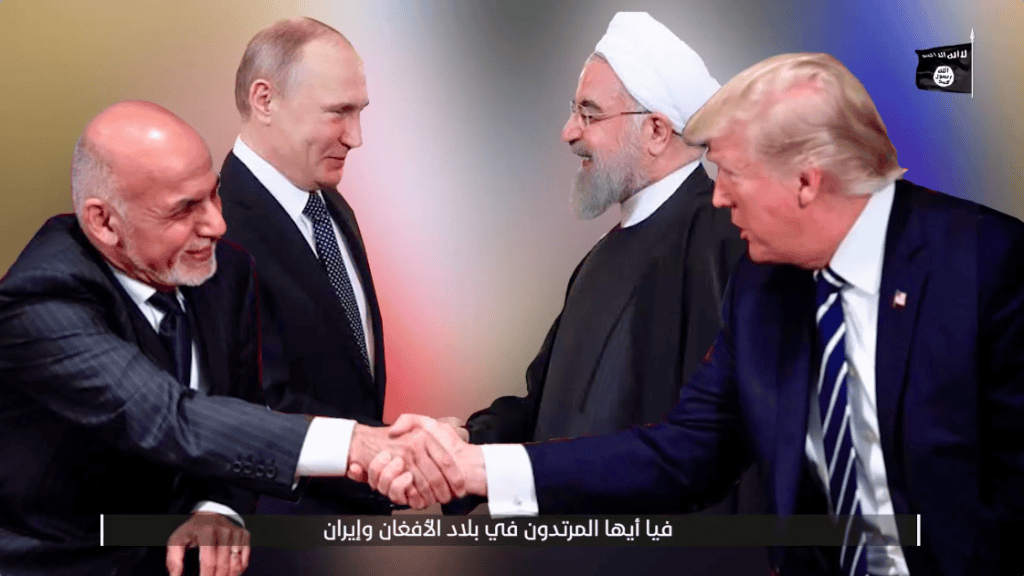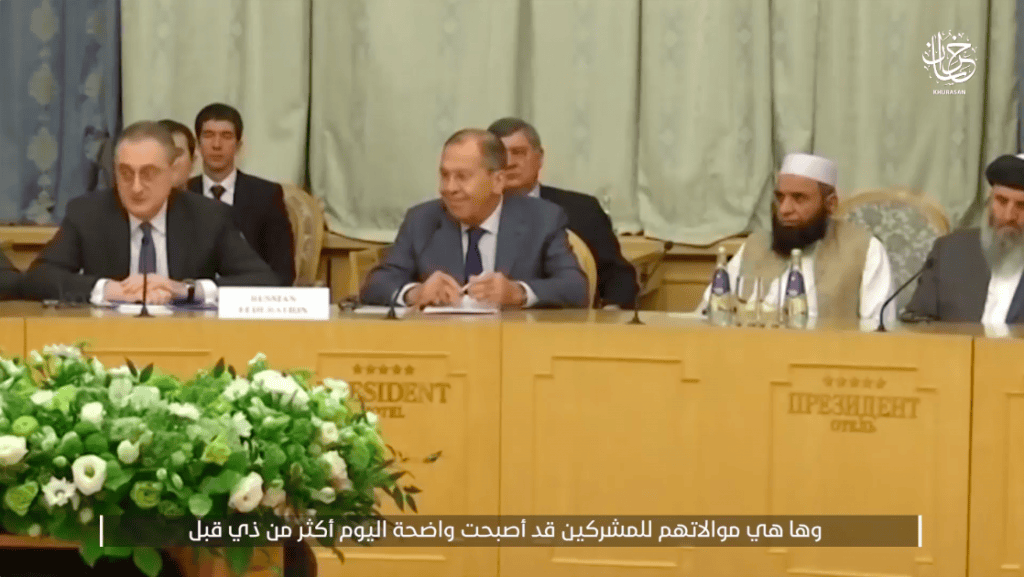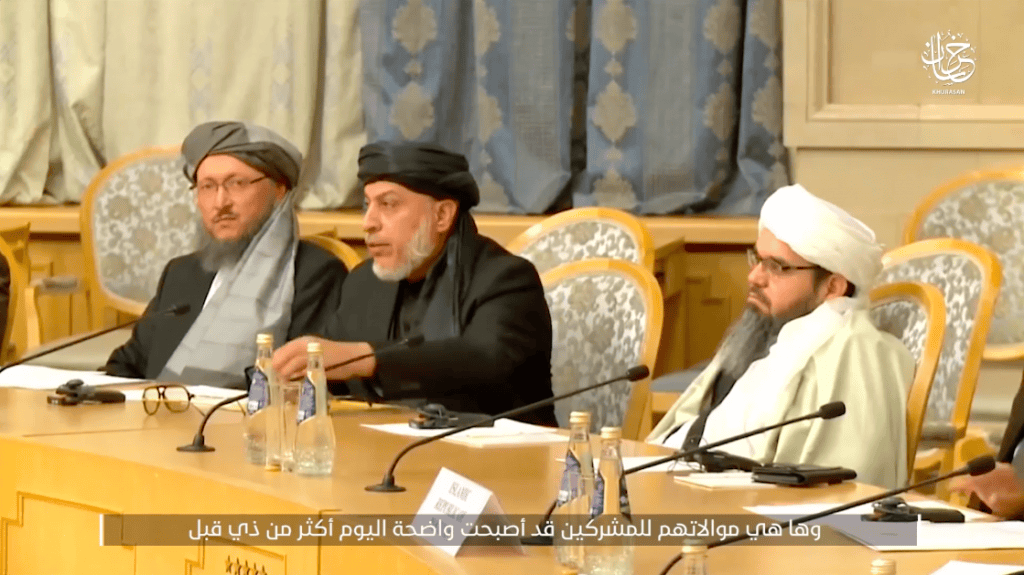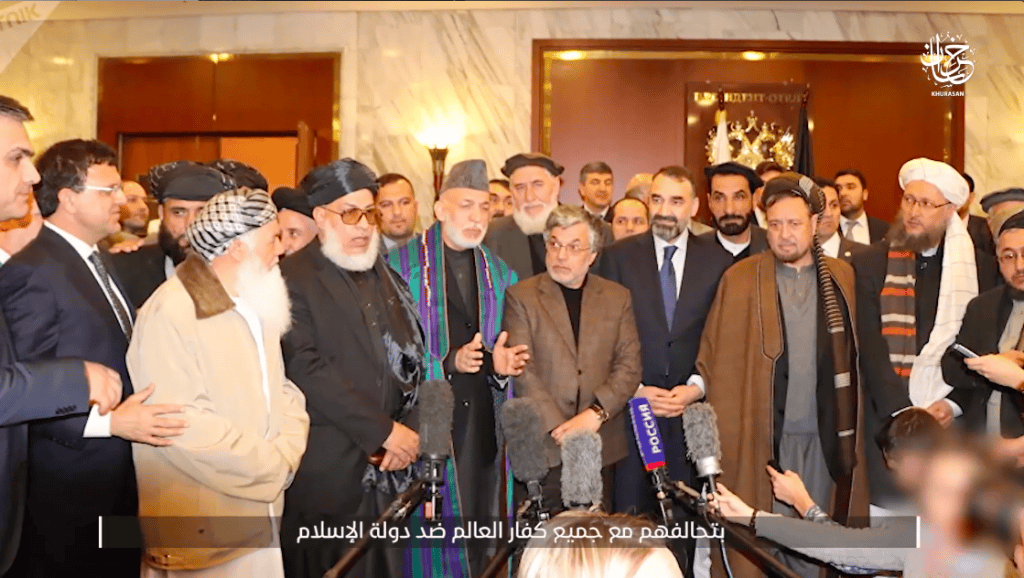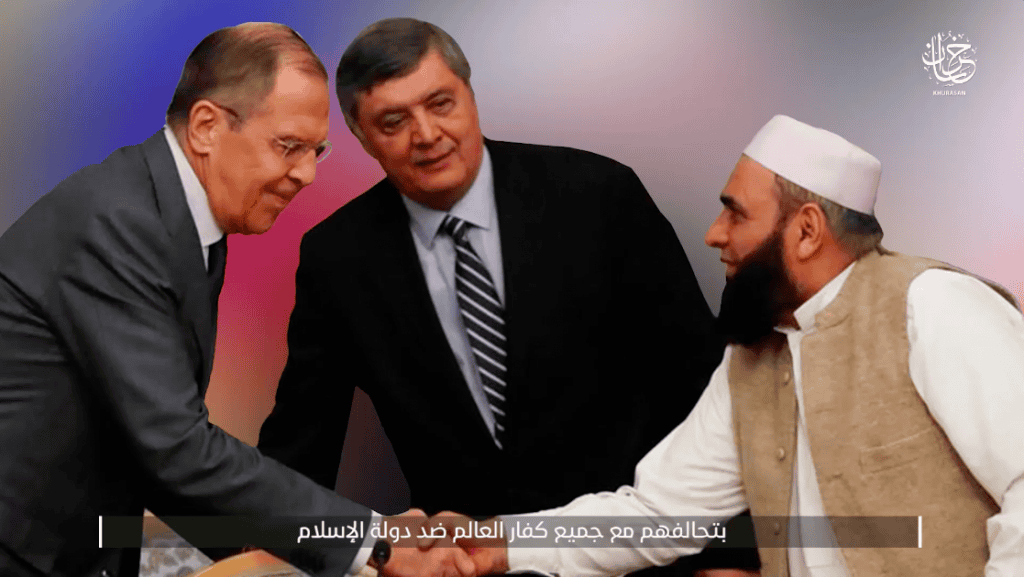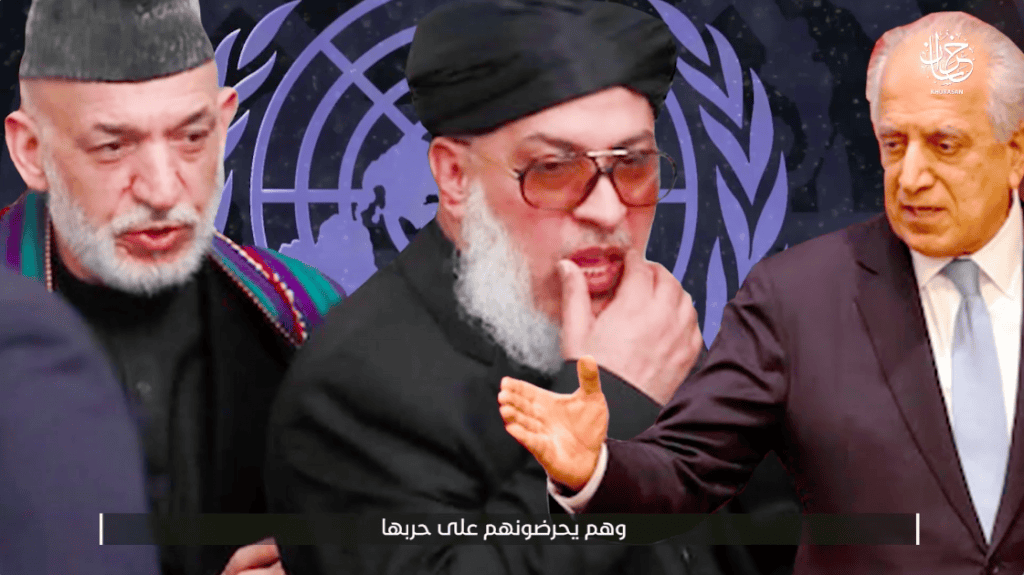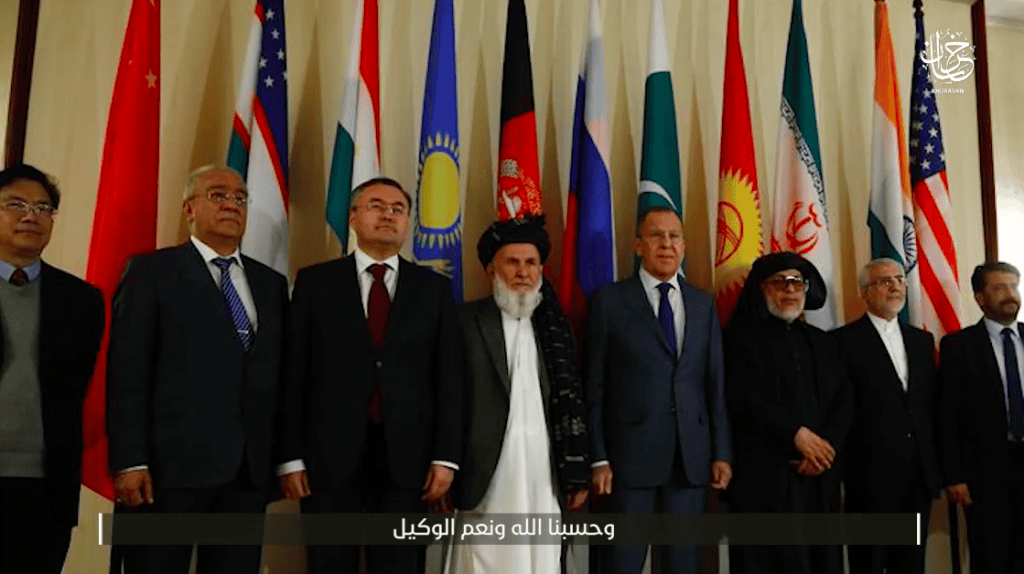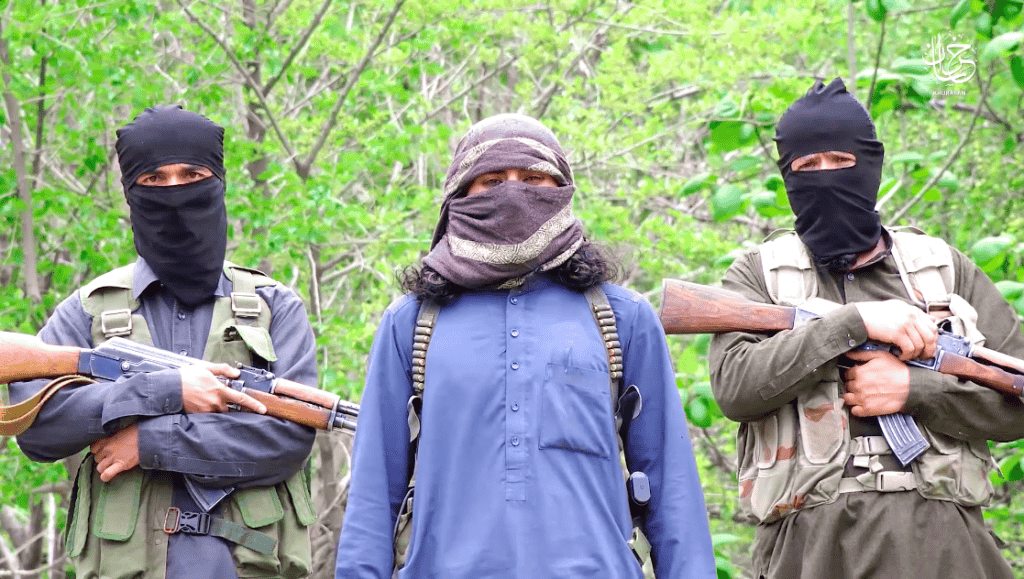
The Islamic State’s Khorasan province has released a 12-minute, 28-second video reaffirming its fighters’ allegiance to Abu Bakr al-Baghdadi. The production is part of the self-declared caliphate’s “And the Best Outcome is for the Righteous” series, which previously featured jihadists in West Africa, the Sinai, the Caucasus and the Philippines renewing their fealty to Baghdadi.
As in those videos, the Khorasan province’s clips are introduced with on-screen text emphasizing that the jihadists remain committed to the cause. They will continue to fight the Islamic State’s enemies, even though they claim to have defeated the caliphate.
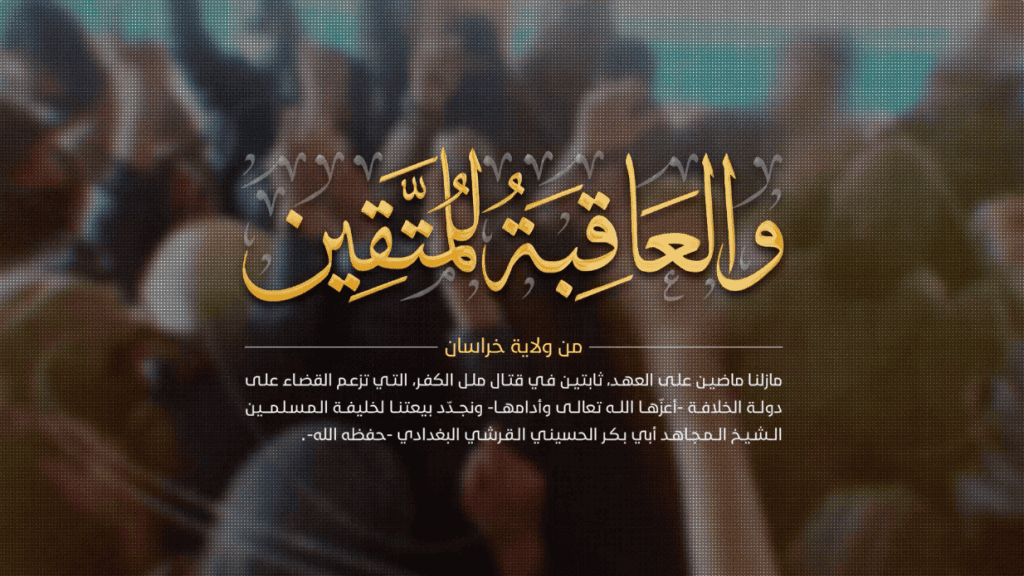
The Khorasan is an expansive area covering Afghanistan, Pakistan and at least parts of several other surrounding countries. Although only a small number of fighters are shown on screen at any one time, they are supposed to represent much of the region.
Indeed, if the video’s subheadings accurately reflect the Islamic State’s internal organizational structure, then the production identifies key figures throughout the Khorasan.
Six geographic regions, with seven different local leaders, are featured. They are: Abu Zubayr al-Khorasani (Afghanistan), Abu Hafs al-Khorasani (western Afghanistan), Abu Mujahid al-Farisi (Iran), Abu Talha al-Hindi (India), Abu Abdallah al-Kashmiri (Kashmir), Saad al-Bakistani or al-Pakistani (Pakistan), and Abu Khalid al-Bakistani (Pakistan).
Although these seven men address the camera in more than one language (including Pashto, Dari and Farsi), their remarks are transcribed in Arabic at the bottom of the screen. Collectively, they emphasize that the Islamic State is attempting to wage war against the rest of the world.
The Islamic State recently began marketing new so-called provinces in Kashmir (Wilayah Hind) and Pakistan (Wilayah Pakistan). These entities appeared to be outgrowths of the Khorasan mother organization. But editors of the new Wilayah Khorasan video include fighters from these areas, and more.
Abu Zubayr al-Khorasani speaks for several minutes, criticizing world leaders, the Afghan government and the Taliban. Images of President Trump and Special Representative Zalmay Khalilzad are included in a montage that plays as he speaks.
Much of Abu Zubayr’s invective is directed at the Taliban, as he claims that his rival jihadists are apostates. He calls on Taliban fighters to defect, highlighting the group’s willingness to engage in diplomacy with the U.S. and Russia. Photos of the Taliban attending meetings in Russia are flashed across the screen to emphasize the jihadists’ alleged weakness in the face of an infidel power. In reality, the Taliban has used diplomacy to build international legitimacy for its own Islamic Emirate, often at the expense of the Western-backed government. For Baghdadi’s enterprise, however, such shrewd political efforts are religiously impermissible.
U.S. officials have openly worried about the possibility that more Taliban members will defect to the Islamic State’s Khorasan province if a peace deal is struck. Thus far, the Taliban has shown no willingness to engage in a real peace accord and has instead used the talks to extract various concessions from the U.S. as it looks to withdraw. But if the Taliban agrees to any sort of deal, even a figleaf one, the Islamic State will clearly look to capitalize. Abu Zubayr’s speech is intended to further that poaching effort.
Abu Hafs al-Khorasani builds on his comrade’s critique, adding others around the world to the group’s litany of enemies.
The identification of Abu Mujahid al-Farisi as a key figure inside Iran is intriguing. In June 2017, a team of Islamic State terrorists attacked the Iranian Parliament and the tomb of Ayatollah Khomeini. And in Sept. 2018, another team of jihadists assaulted a military parade in Ahvaz, Iran. Therefore, Baghdadi’s network clearly has some operational capability inside Iran. But the extent of this footprint isn’t clear.
Abu Mujahid’s precise location isn’t given. It is possible that he and his men are based inside Iran proper, or along the border region with Afghanistan and Pakistan. Unsurprisingly, Abu Mujahid verbally blasts the Iranian regime, saying that it is at war with Sunni Muslims throughout the Middle East.
Similarly, the speakers based in Kashmir, India (which may mean another part of Indian-controlled Kashmir) and Pakistan make their hostility for all of the regional governments clear.
After all of the leadership figures are finished delivering their monologues, small bands of fighters are shown clasping hands as they express their undying fealty to Baghdadi.
Despite a prolific targeting campaign, the Islamic State has obviously maintained a prolific media apparatus. The new series, “And the Best Outcome is for the Righteous,” is just one example of the group’s frequent media output.
Abu Zubayr al-Khorasani addresses the camera from inside Afghanistan:
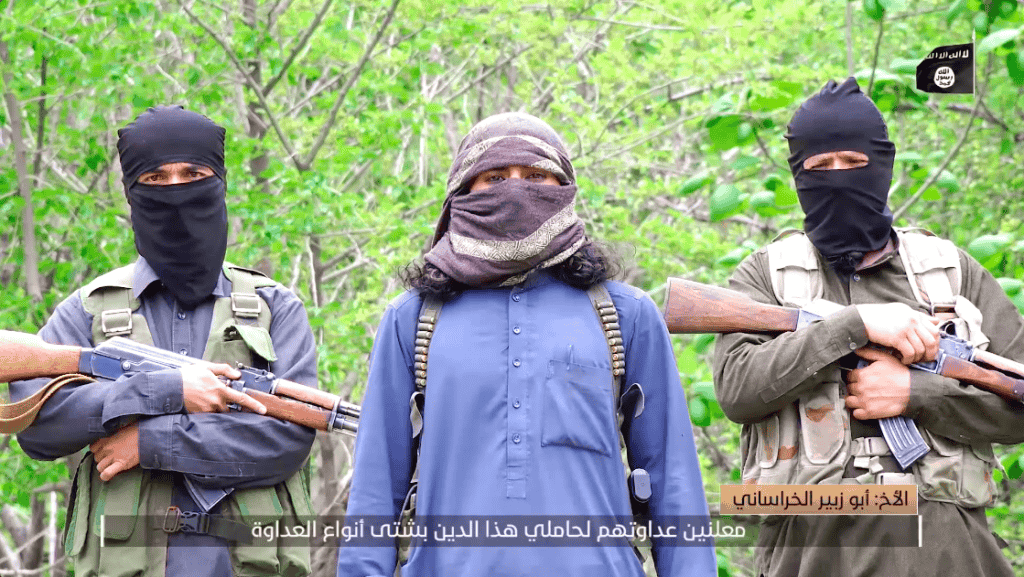
Abu Hafs al-Khorasani (seen standing on the left) delivers his speech from somewhere in western Afghanistan:
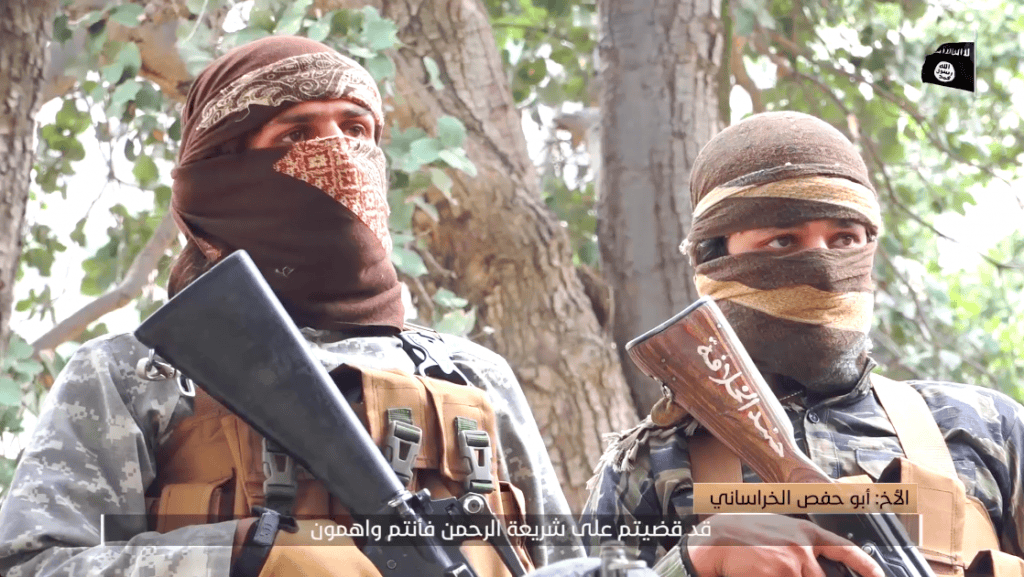
Abu Mujahid al-Farisi reads a prepared text from somewhere inside Iran:
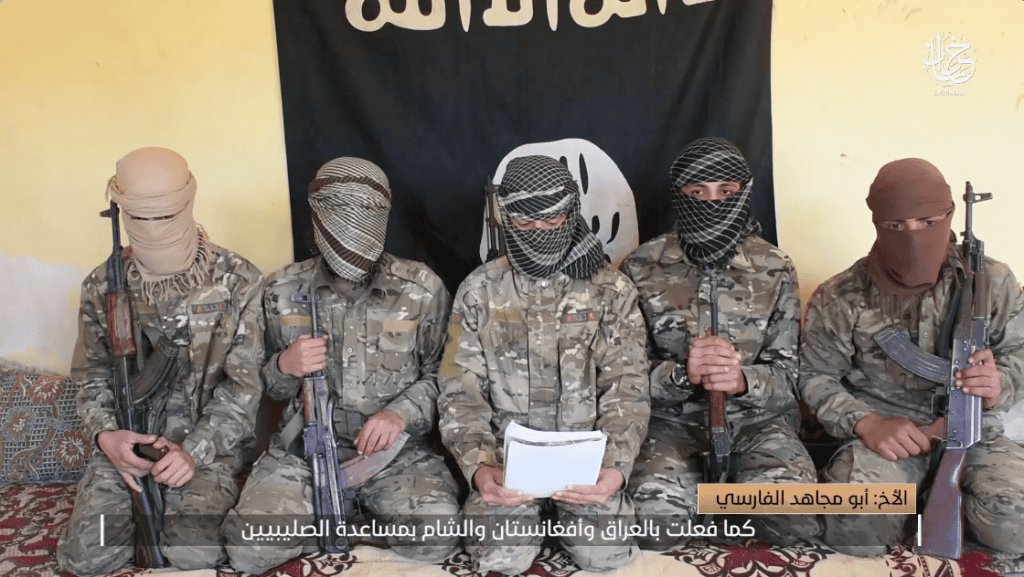
Abu Talha al-Hindi (center) is identified as a leadership figure for the group in India, or a part of Indian-controlled Kashmir:
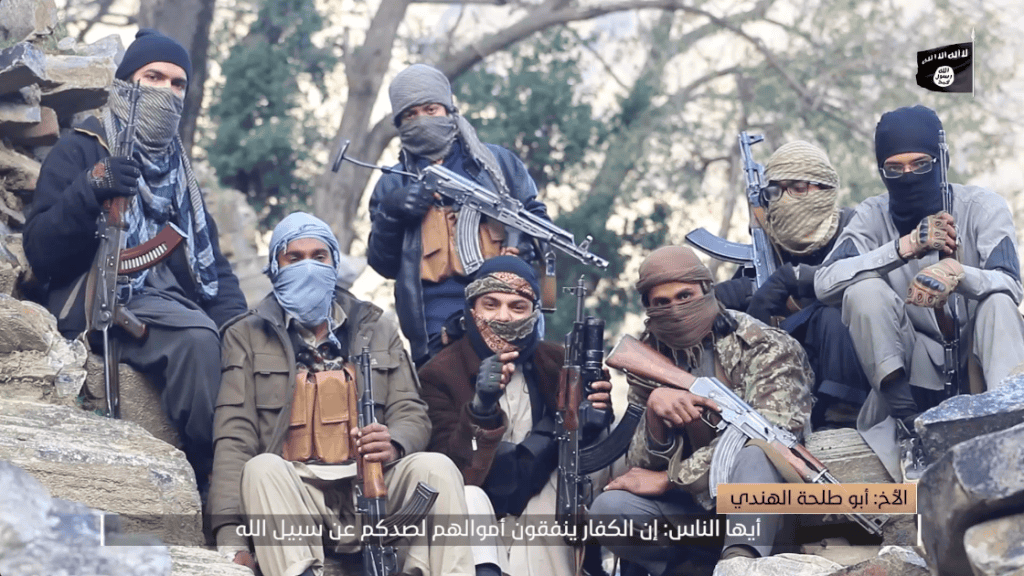
Abu Abdallah al-Kashmiri speaks from somewhere inside Kashmir:
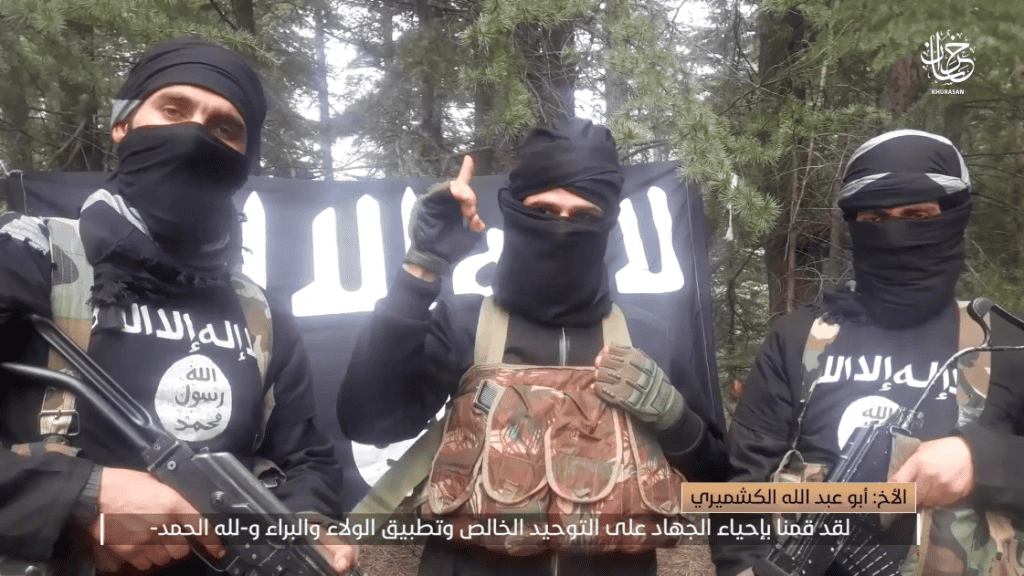
Saad al-Bakistani is one of the two Islamic State leaders in Pakistan who is featured in the video:
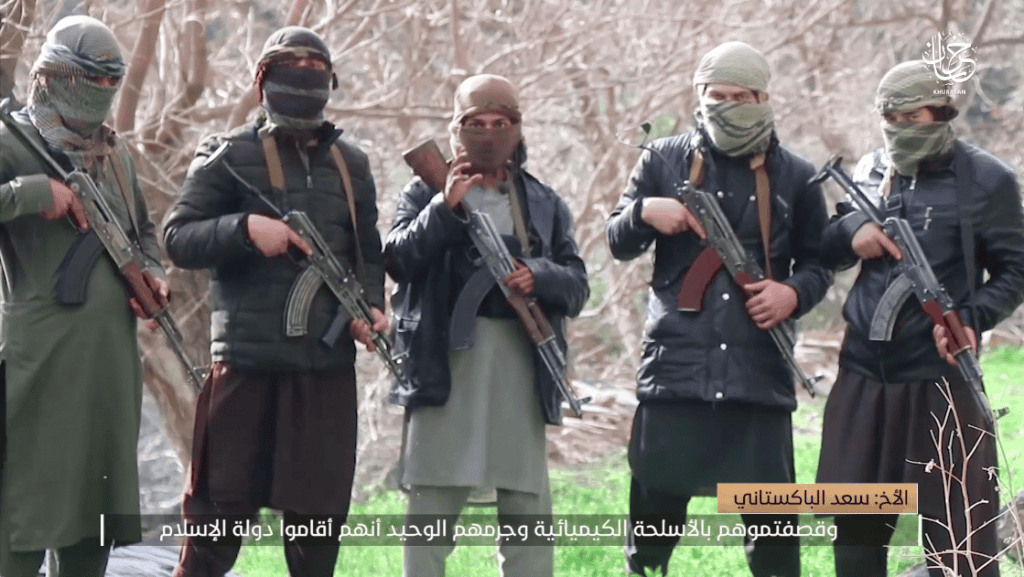
Abu Khalid al-Bakistani is also based somewhere in Pakistan:
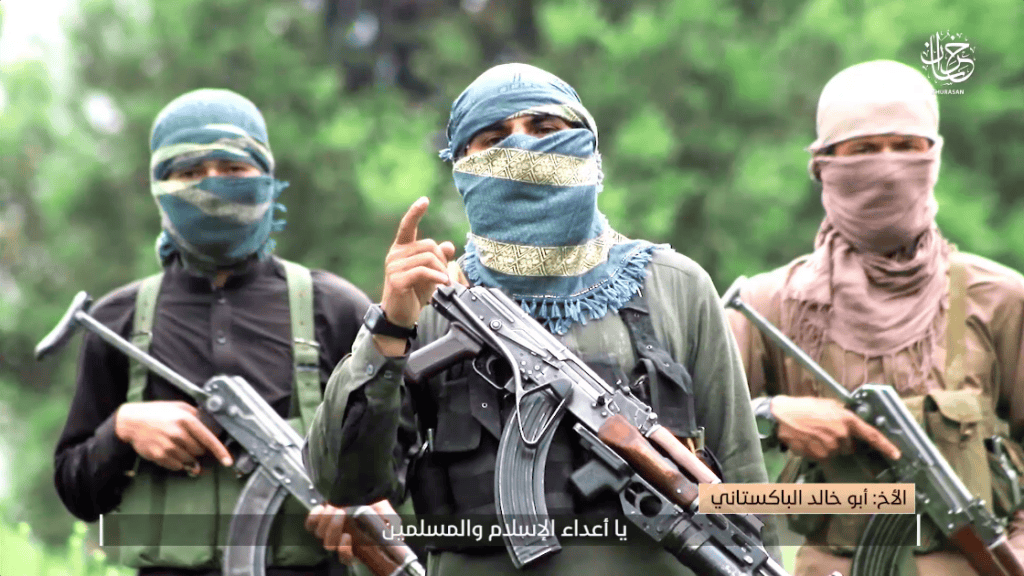
Islamic State fighters throughout the Khorasan region renew their allegiance to Baghdadi:
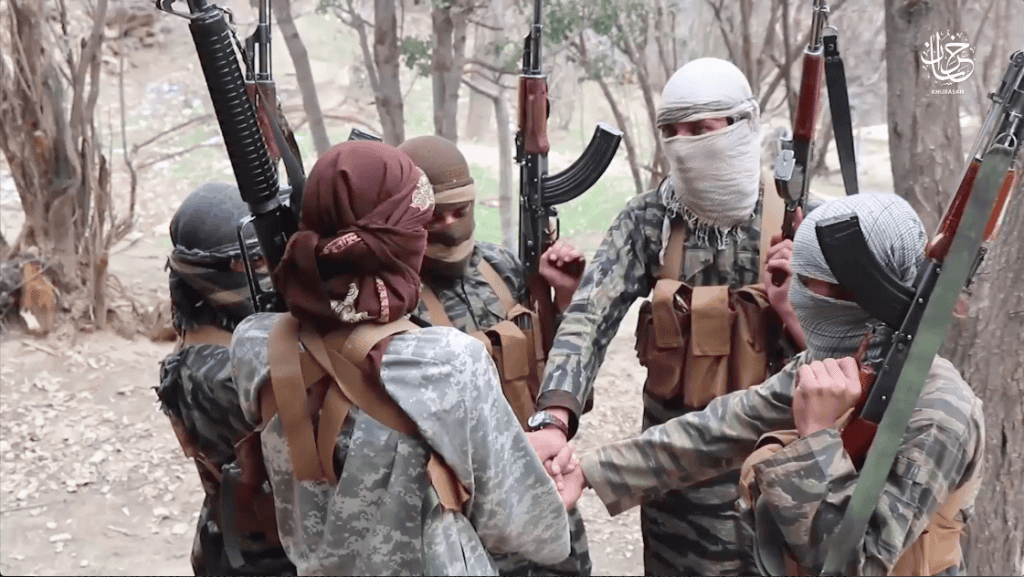
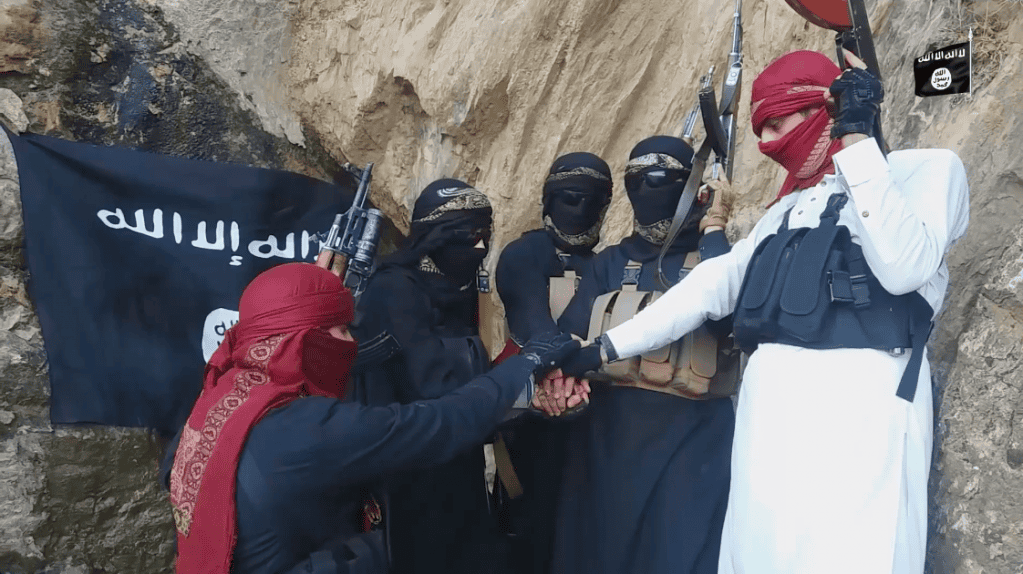
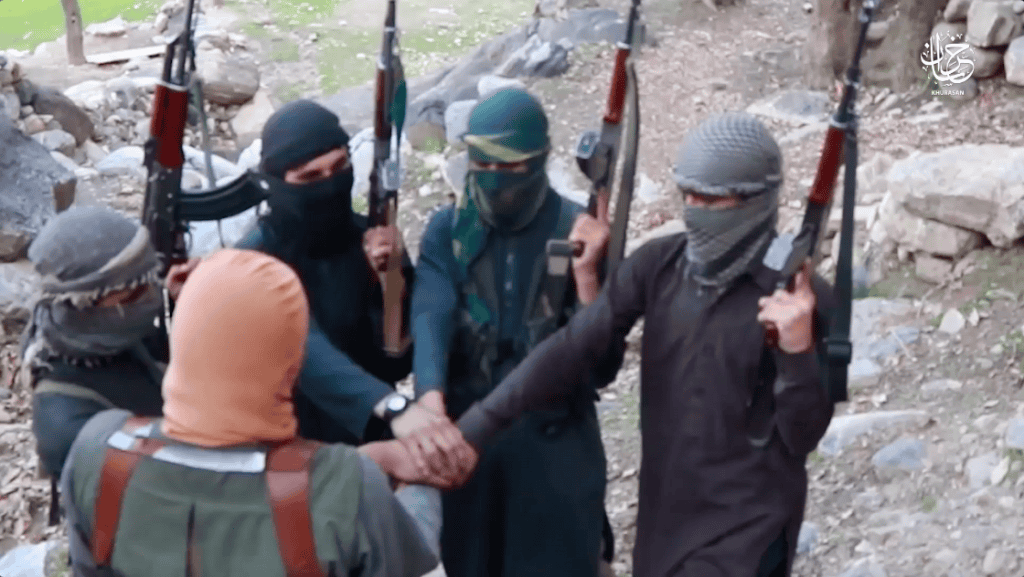
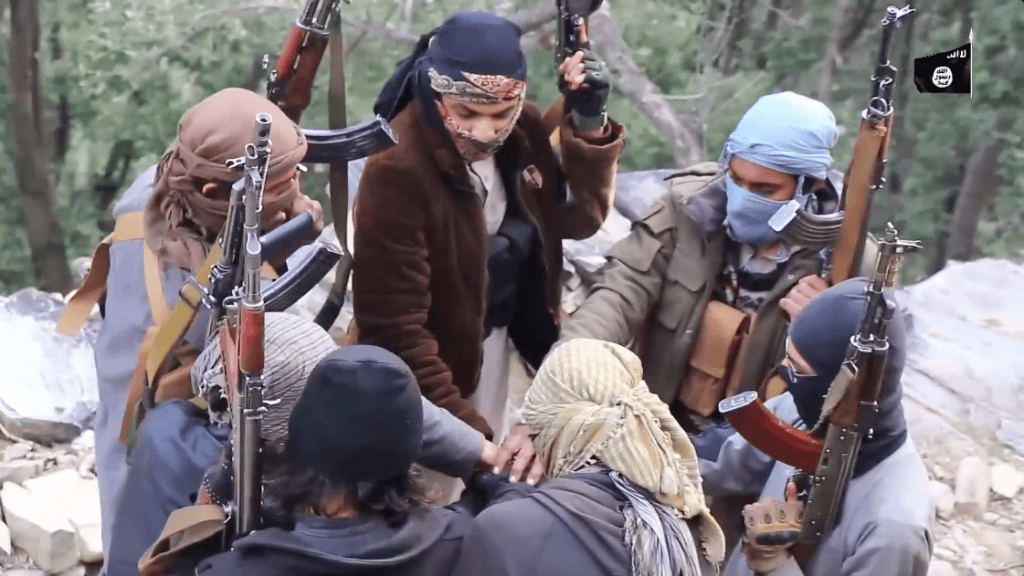
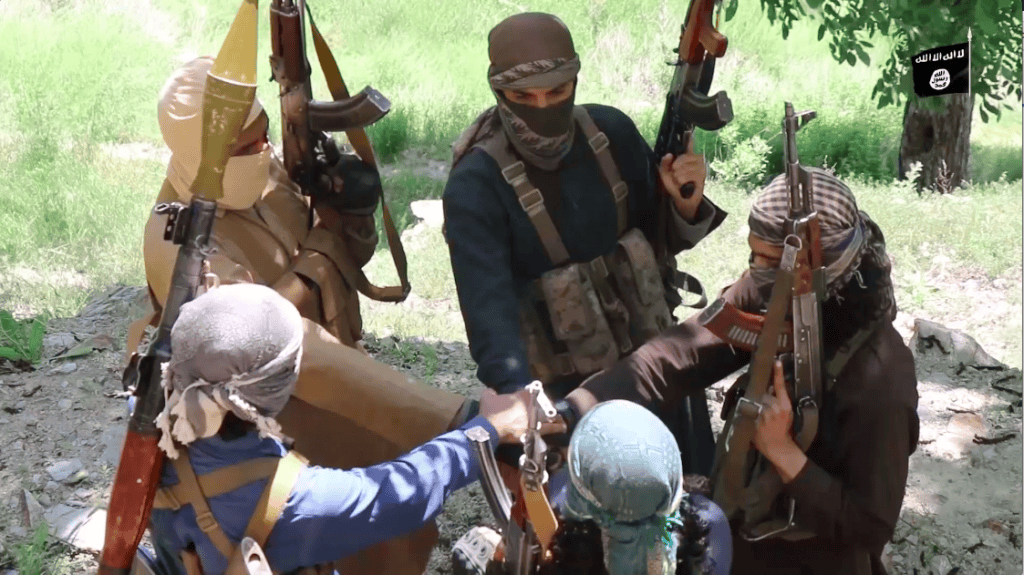
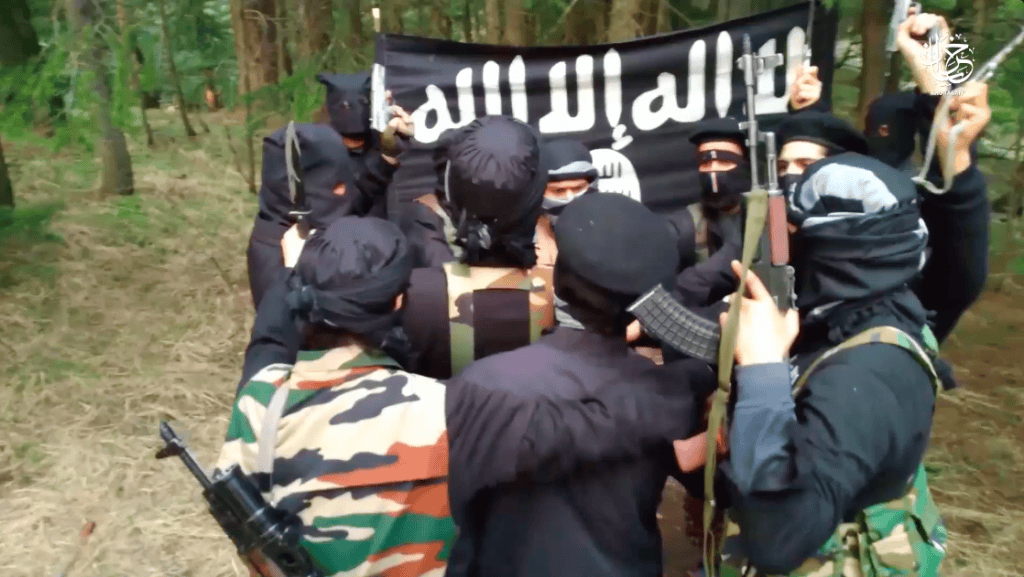
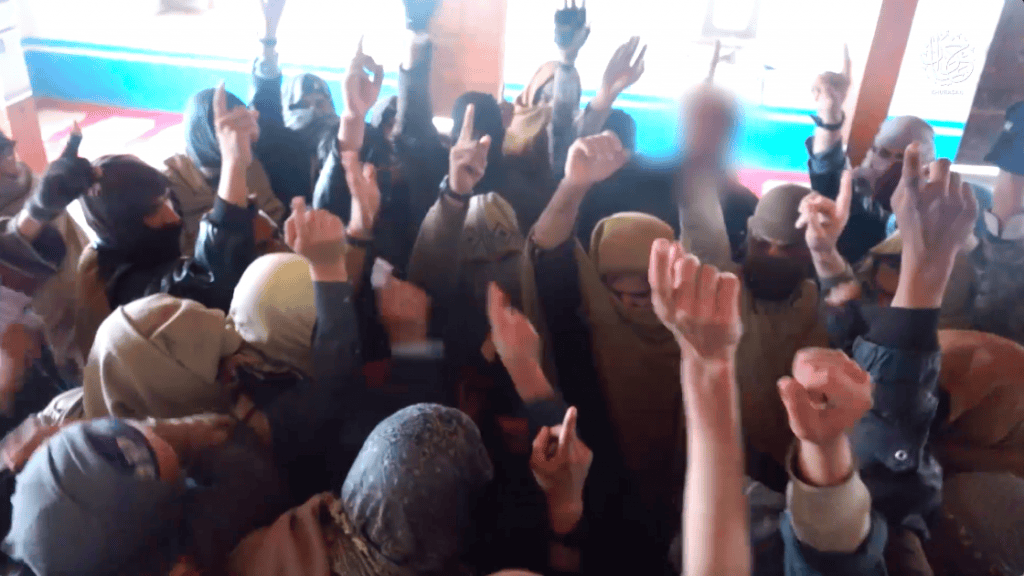
Abu Zubayr al-Khorasani speaks first in the video. He criticizes the Taliban at length, as images of the Taliban engaging Russian and other officials appear on screen. Pictures of President Trump and U.S. Special Representative Zalmay Khalilzad are also included:
